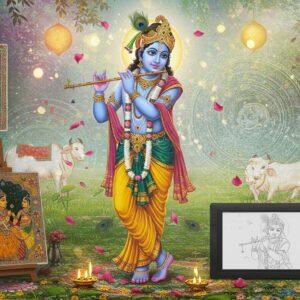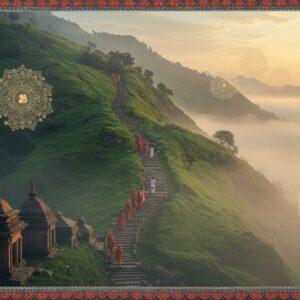
Ancient India’s artistic legacy is diverse and captivating, with the Gandhara and Mathura schools standing as prominent examples. Flourishing during the Kushan period (circa 1st century BCE to 3rd century CE), these styles offer a unique lens into India’s rich cultural and spiritual past. This exploration delves into the distinct characteristics and influences that shaped Gandhara and Mathura art.
Historical and Geographical Context
Understanding the historical and geographical nuances is crucial to appreciating the distinct characteristics of these art forms. Gandhara, located in present-day Pakistan and Afghanistan, bore the imprint of Greco-Roman artistic traditions due to Alexander the Great’s earlier conquests and the subsequent Indo-Greek kingdoms. In contrast, Mathura, situated in northern India, developed a distinctly indigenous style drawing inspiration from earlier Indian art forms and religious practices. Both regions flourished under the Kushan Empire (circa 30 CE to 375 CE), a period of significant artistic and cultural exchange. The Silk Road’s influence is evident in Gandhara’s art, while Mathura, a major religious and trade hub, absorbed diverse cultural influences from across India.
Key Characteristics of Gandhara Art (50 BCE – 500 CE)
Gandhara art is renowned for its unique fusion of Indian and Greco-Roman aesthetics. This syncretic style is particularly evident in its depictions of the Buddha.
- Iconography and Style: Primarily Buddhist, portraying Buddha, Bodhisattvas, and other deities with a focus on realism and naturalism. Sculptures exhibit detailed human anatomy, flowing drapery, and expressive facial features, often reminiscent of Hellenistic art.
- Materials and Techniques: Predominantly grey schist stone, chosen for its ability to hold intricate detail. Advanced sculpting techniques allowed for high-relief and three-dimensional figures.
- Influences and Themes: Clear Greco-Roman influences are visible in motifs like Corinthian columns and winged cherubs. Themes often depict Buddha’s life events and Jataka tales, sometimes drawing parallels with the image of Apollo.
Key Characteristics of Mathura Art (1st century BCE – 3rd Century CE)
Mathura art stands in contrast to Gandhara, celebrating a purely indigenous Indian style deeply intertwined with religious significance.
- Iconography and Style: Encompasses broader religious themes, including Buddhist, Jain, and Hindu iconography. The style is characterized by robust figures, emphasizing physical strength and vitality. Sculptures often exhibit a frontal and symmetrical posture.
- Materials and Techniques: Primarily crafted from the locally abundant red sandstone. The focus is on symbolic representation rather than strict anatomical accuracy.
- Influences and Themes: Rooted in earlier Indian sculptural traditions, Mathura art depicts Yakshas and Yakshis (nature deities), Jain Tirthankaras, and Hindu deities like Vishnu and Shiva.
Conclusion
Gandhara and Mathura art represent two distinct yet equally significant chapters in India’s artistic history. Gandhara’s Greco-Roman infused realism stands in contrast to Mathura’s indigenous and symbolic style. Both schools, however, flourished under the patronage of the Kushan Empire, reflecting the era’s cultural dynamism and religious fervor. Studying these distinct styles offers a deeper understanding of ancient India’s artistic, religious, and cultural landscape.
FAQs on Gandhara vs. Mathura Art
What distinguishes Gandhara and Mathura art? Gandhara art displays Greco-Roman influences, evident in its realistic portrayals and use of grey schist. Mathura art, in contrast, is characterized by its indigenous Indian style, robust figures, and use of red sandstone.
What time periods did these schools flourish in? Gandhara art flourished between approximately 50 BCE and 500 CE, while Mathura art thrived from the 1st century BCE to the 3rd century CE, both coinciding significantly with the Kushan period.
How do their depictions of Buddha differ? Gandhara’s Buddhas often exhibit Hellenistic features, while Mathura’s portrayals adhere to a more traditional Indian aesthetic.
Explore Ancient Indian Art with Poojn.in
Poojn.in, India’s leading online store for cultural and religious goods, offers a curated selection of items reflecting these rich artistic traditions. Delve deeper into the world of Gandhara and Mathura art with our:
- Exquisite Buddha Statues: Discover authentic representations of the Buddha in both Gandhara and Mathura styles, crafted with meticulous detail.
- Handcrafted Sculptures: Explore a diverse collection of Hindu deities and other figures, showcasing the artistic heritage of the Mathura school.
- Educational Resources: Expand your knowledge with books and articles on Indian art history, providing valuable context to your appreciation of these ancient styles.
Visit Poojn.in today to explore our collection and connect with India’s rich artistic heritage.


